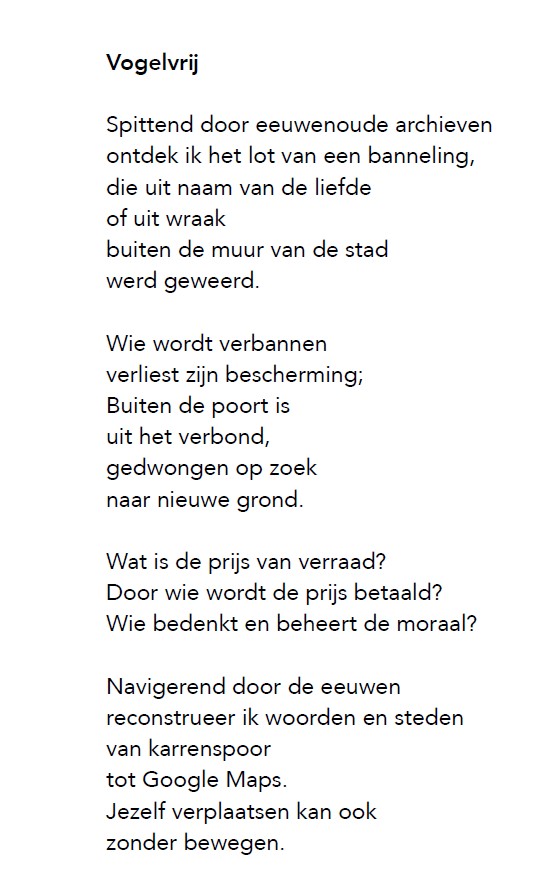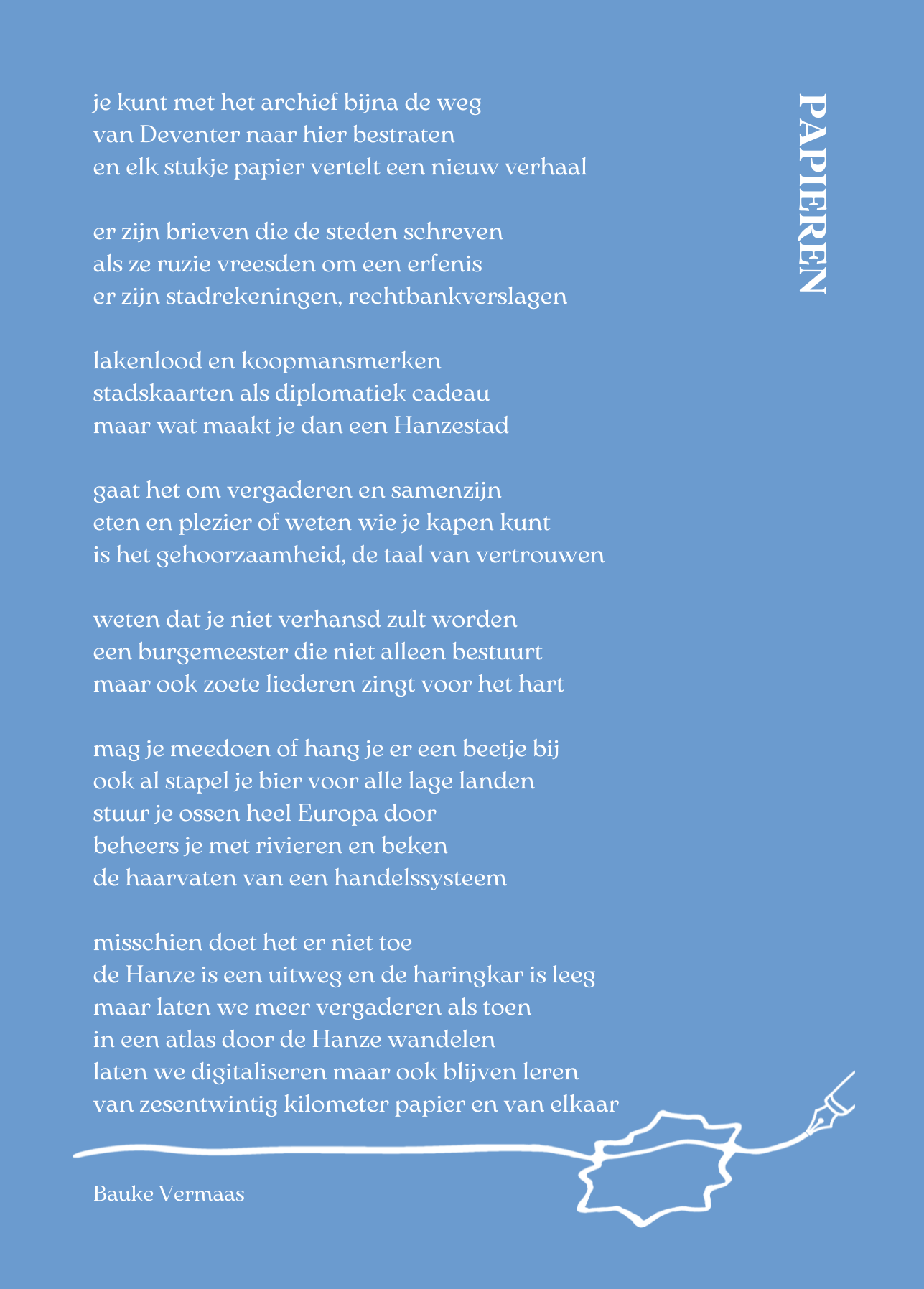History in conflict webinar: introducing the early modern edition
Justyna Wubs-MrozewiczDid people in premodern times understand what the past was, and were they able to engage with it or even use it to their advantage? In his influential essay Vergangene Zukunft (1968, in English as Futures Past, 1985), Reinhart Koselleck argued that the premodern (Western) understanding of the past was quite different from the modern one. The past was seen as part of a sequence of cycles in nature and lifetimes, as part of a theological framework which could not be captured by secular chronology, or as a reservoir of timeless tales which could be directly applied as lessons. Judith Pollmann (Memory in early modern Europe, 2017) has rightly pointed out that this essay was a contribution to the philosophy of history, and not an analysis of premodern social practices. She showed in her work that the engagement with the past was rich, widespread and that no sharp line can be drawn between the premodern and the modern in this respect. A complex sense of – and by extension, a sophisticated use of – the past is not only a modern phenomenon.
In our series of webinars, we use the magnifying glass of conflicts to reveal this complexity and sophistication in detail. The authors of the papers demonstrate that there was a premodern understanding of the past which could be very specific and pragmatic, for instance when pointing to the dates of business deals or riots. But there was also an understanding that the past could be perceived and narrated very differently (in accounts of quarrels), that it could be negotiated (in diplomatic settings) or obliterated (in archives, landscapes or social customs). In our discussions, the magnifying glass is applied to primary sources in order to discuss the role the past played in conflicts. The connecting question of the webinars is ‘What happened in a conflict situation when one put references to the past – history – memory – precedent on the table?’ The enumerated temporal concepts, obviously, are not identical. Some are more fitting to a judicial context (precedent), while others are more fitting to a context where the experience of the past is key (memory). What they do have in common in the context we examine here by way of experiment is a clear function in handling the conflict.
The June 2021 medieval webinar already revealed a wide spectrum of such uses. The January 2022 webinar discussed here focused on truly fascinating early modern sources from all parts of Europe, as well as Asia and North America. Authors discussed the role of the past in conflicts as diverse as tense peace negotiations or struggles with financial bubbles. A broad range of actors with a high or low profile in society made use of the past as a tool: on their own account, on behalf of individuals, of groups or of institutions. Again, like in the medieval evidence, we can spot various intentions behind this use, as well as various forms of it. Engagement with the past certainly went beyond ‘lessons to be drawn’; or, to use a modern counterpart, it was not reduced to propaganda. There was investment of time, effort and resources to put the past in the spotlight or, conversely, relegate it to the shadows. Once again, we can notice that #historyinconflict was oriented towards the future: in particular, towards the future of relations.
Some highlights from the early modern presentations. #Historyinconflict could be used to:
•establish a precedent in diplomatic negotiations and ceremonies;
•create a possibility for change in diplomatic relations;
•demonstrate the asymmetry of power in a dispute or war;
•demonstrate the trustworthiness of conflict participants or of the mediators;
•bestow authority to the mediators, for instance diplomats;
•justify and legitimize the cause for which the conflict was fought;
•increase pressure when juridical means were insufficient;
•demand closure of a conflict;
•argue for the continuation of a conflict or serve as a warning of escalation;
•combine religious and secular argumentation;
•educate groups which were or could be touched by the conflict;
•counter the official political narrative by presenting a personal (hi)story;
•advance a personal cause by pointing to larger political developments in a diachronic perspective;
•protect an individual by pointing to how an institution has developed;
•urge the inclusion (or exclusion) of groups in society.
As in the medieval sources, we could see that conscious choices could be made not to mention the past in conflicts: in order to put it to rest and thus to reach reconciliation, but also to disguise or even obliterate discourses, (peace) agreements or traditions. The past could be removed from the public eye to prevent further conflicts, avoid embarrassment or to repress groups, for instance by not including documents in the archives, removing expiatory crosses or forbidding certain dress forms. It could be modified through content or language used. There was an awareness that #historyinconflict could potentially be a powerful tool.
The presentations have also prompted some questions which we could not discuss at length, but which we might want to return to:
•can invoking the past during a conflict be a symptom of a looming shift in a power balance?
•are references to the past of special importance to whistleblowers in conflicts?
•are obliviating tactics used in specific phases of conflicts?
If you want to dive into the highly interesting cases and sources, read the summaries of the presentations, and find more information about these authors:
Stuart Carroll: ‘Memorials and Conflict Resolution in Early Modern Europe.’
Jan Hennings: ‘Precedent, tradition, or history? The past as an argument in status conflicts.’
Lena Oetzel: ‘Peace as an argument in conflict I: The peace of Prague in the Westphalian peace negotiations.’
Dorothée Goetze: ‘Peace as an argument in conflict II: The peace treaties of Oliva and Alt-Ranstädt in the Swedish-Saxon dispute at the German Perpetual Diet.’
Stephen Cummins: ‘Criminal pasts and conflict in the early modern Kingdom of Naples.’
Carlo Taviani: ‘Machiavelli and the Chimera. Financial Bubbles and Schemes in Early Eighteenth Century France.’
Marjolein Schepers: ‘Who belongs to the parish? Parish conflicts on household settlement status and access to poor relief in eighteenth-century Flanders and France.’
Shannon McSheffrey: ‘Documenting the London Evil May Day Riot, 1517.’
Gerard Wiegers: ‘Late 15th-century forced conversion to Christianity in Spain and a late 16th-century response.’
Hilde De Weerdt: ‘Recording and Anthologizing Personal, Communal, and Interstate Conflict in Late Imperial Chinese History.’
Obviously, this digital anthology covers some, but not all possible aspects of the use of history in early modern conflicts. We welcome constructive comments and further examples here, on our Twitter account or via e-mail (j.j.wubs-mrozewicz AT uva.nl).
Justyna Wubs-Mrozewicz
Blog posts with summaries by Ester Zoomer, Christian Manger and Alex Collin.


